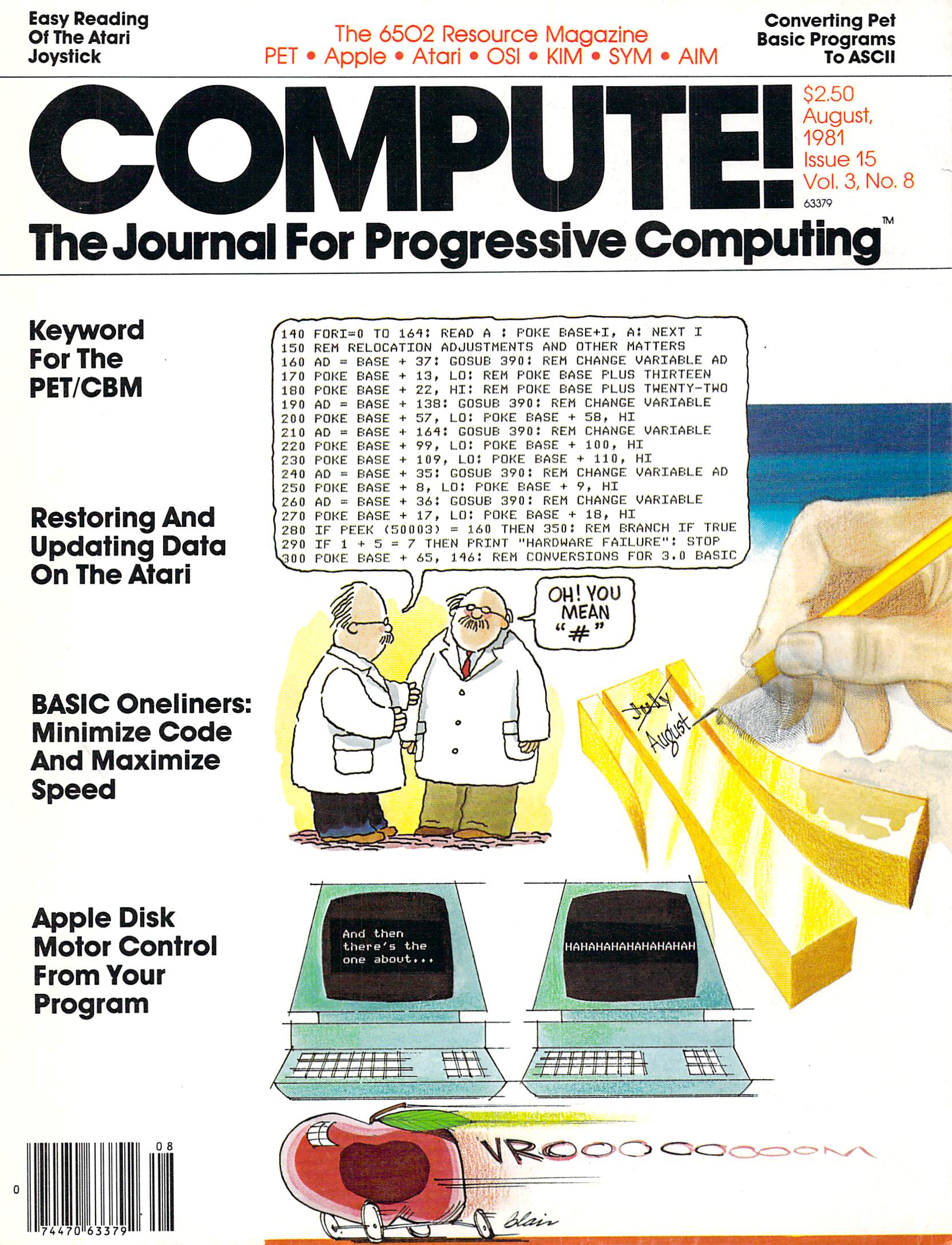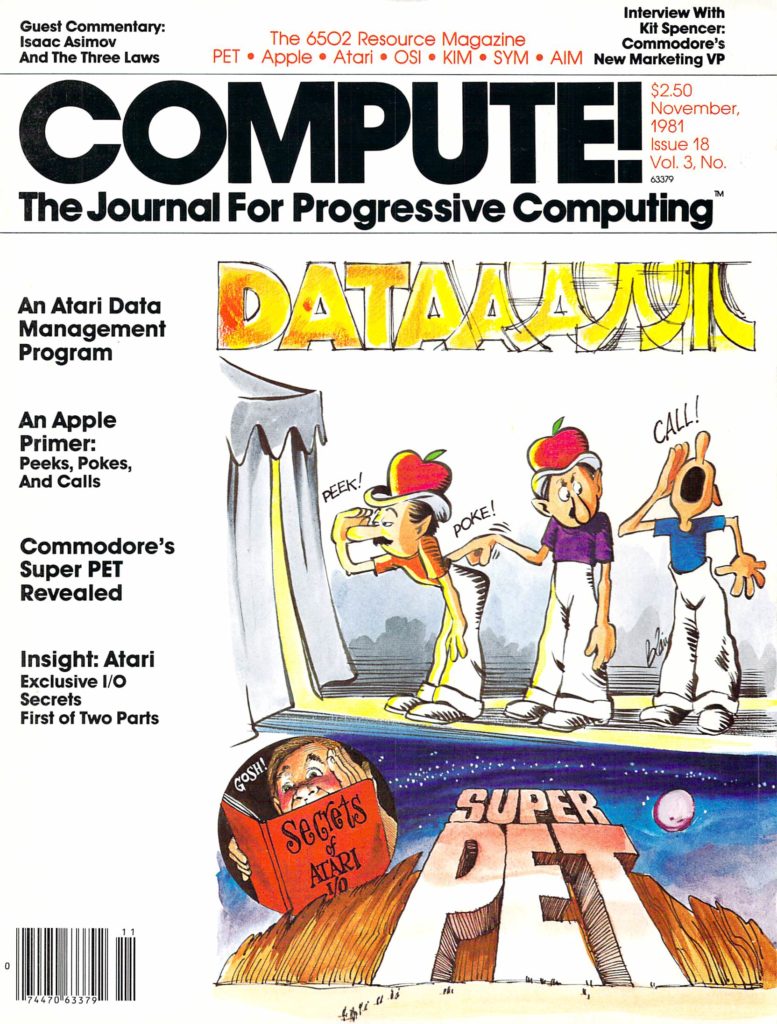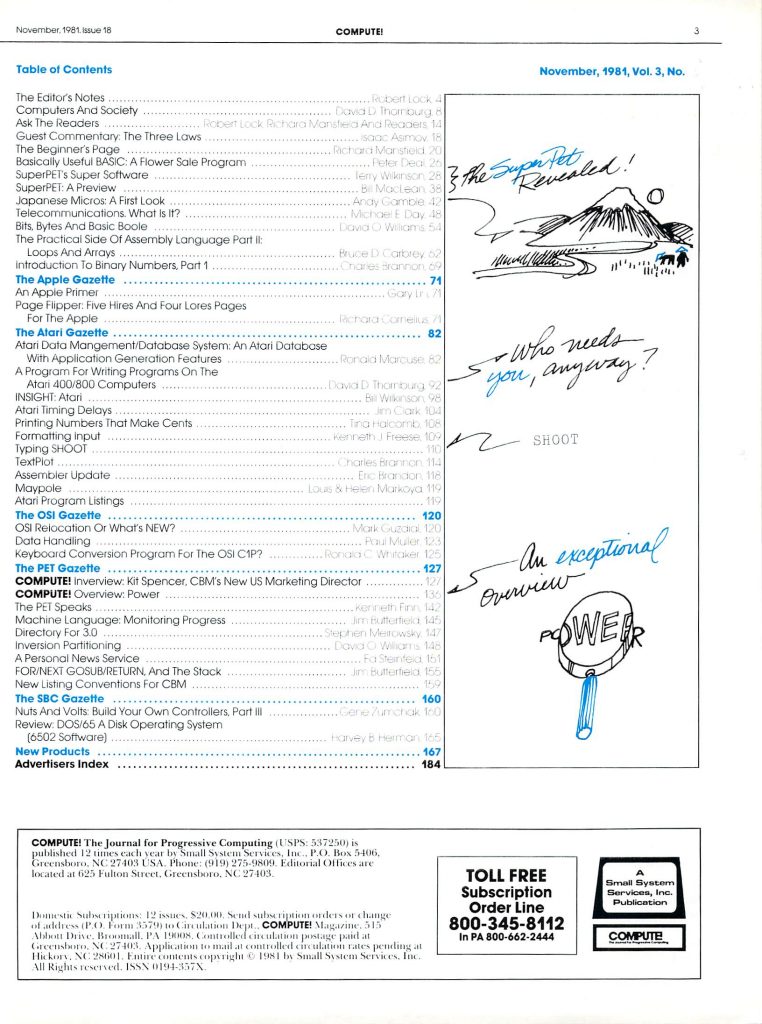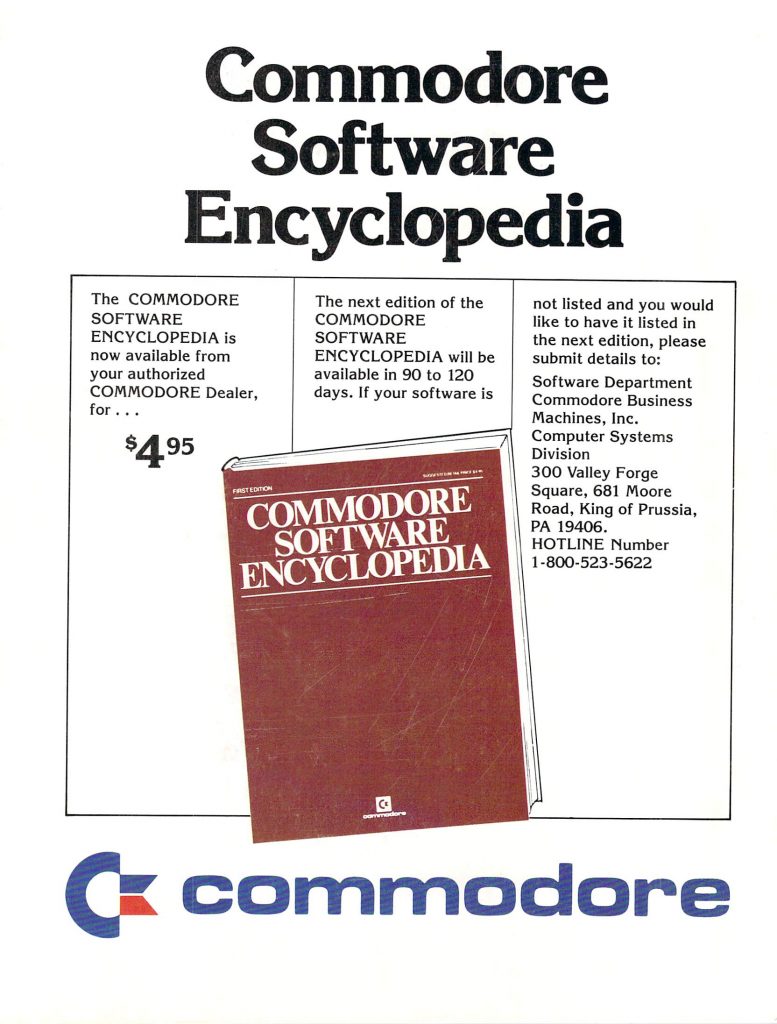Source: Compute! – Issue Number 10 – March 1981
Compute! was a popular multi-format magazine that covered various computers throughout its long life which started in 1979 and lasted until the 1990s. Throughout its early life, it strictly covered computers based on the 6502 processor. The March 1981 issue includes:
Table of Contents
- The Editor’s Notes – The editor opines on software piracy vs. the right to back-up software that you buy.
- A 6502 Version of the Winter Consumer Electronics Show: January ’81 – News related to 6502 based computers at the Winter CES. The biggest product introduced that year was the Commodore VIC-20.
- The Beginner’s Page – Some beginner information about BASIC, operating systems, ROM, RAM and storage media.
- Computers and Society – A look at communications between user and computer via programming languages. LOGO and PILOT are emphasized while BASIC and PASCAL are also mentioned.
- Taking the Plunge – Machine Language Programming for Beginners – An introductory guide to machine language on the PET though it is applicable to other machines of the time as well. The differences between BASIC, machine language and assembly code are discussed.
- Computer Communications Experiments – An article on building an RS-232C interface which can be used for modems and other things.
- Basics of Light Pen Operation – In the early days of computing, light pens were a fairly common user interface option. This article describes in technical detail how they work.
- Getting the Most from your Pet Cassette Deck – The kinds of cassettes you should use, how to shorten they time it takes to search for programs, and more.
- The Mysterious and Unpredictable RND – Part 3 – Part 3 of a multi-part series on random number generation in BASIC on the PET. This part demonstrates a dice rolling program using multiple dice.
- A CAI Program Called Linear Equation – A type-in program for Computer Aided Instruction of Linear Equations.
- Hex Conversion Using the 6502’s Decimal Mode – A machine language method for converting to and from hexadecimal numbers.
The Apple Gazette
- Clearing the Apple II Low-Resolution Graphics Screen – Several BASIC methods for clearing the screen.
- Fun with Apple and PASCAL – A type-in PASCAL arcade style shooter game for the Apple II (basically shoot at the falling shapes).
- Flipping your Disk – A guide to making your single side disks double-sided. Essentially, this could be accomplished just by clipping a notch in the side of the disk that didn’t already have one. This worked for a variety of 8-bit computers. Drives were generally single sided so you still had to flip the disk over to read and write data to the second side.
The Atari Gazette
- Designing Your Own Atari Character Sets – Creating custom character sets on the Atari 8-bit.
- Atari Basic: A Line Renumbering Utility – A type-in utility for renumbering the lines of a BASIC program. This was important sometimes because you could run out of line numbers. Every line of code in basic started with a line number. If you needed to add code in between two lines then there would have to be available numbers to do so. If you were unwise enough to make every line number consecutive, that could be problematic. It was common practice to number lines by 10s (first line is 10 second is 20, etc.). However, you never know when you might need more extra line numbers in between.
- Atari Memory Dump and Dissassembler – A type-in program that will both dump the contents of memory locations to disk or disassemble lines of code.
- Formatted Output for Atari BASIC – An article with two subroutines for helping you to produce nicely formatted output from BASIC.
- Random Color Switching while Idle – A method to prevent Atari’s built-in color switching screen saver from kicking in. Pressing a key resets the time for this but when playing a games, you may not be pressing any keys.
The OSI Gazette
- A Small Operating System: OS65D the Kernel – The final part in a series on the OS65D operating system.
- A Six-Gun Shootout Game for the OSI C1P – A type-in BASIC game that sounds a bit like Outlaw on the Atari 2600.
The PET Gazette
- Learning About Garbage Collection – Garbage collection (memory reclamation) was necessary on PET machines with certain ROM revision in order to reclaim memory used by strings. Here are a couple of short routines to do that.
- PET Machine Language Graphics – A machine language graphics subroutine for the PET that provides a variety of graphics functions.
- Disk File Recovery Program – A type-in program for the PET that can recover accidentally deleted files.
- PET Exec Hello – A type-in program for automatically executing commands when booting from disk.
- A Flexible Input Subroutine – A type-in subroutine in BASIC that can handle various types of input.
- Universal Tape Append for PET/CBM – A type in program that allows for one program to be appended to another on cassette.
The SBC Gazette
- Experimenting with the 6551 ACIA – Information for interfacing, operating and controlling a 6441 ACIA with a 6502. The 6551 is used primarily for communications.
- A Vocal Hex Dump for the KIM-1 – A program designed to work with a speech synthesizer to speak the data in a given memory location.
- Expanding KIM Style 6502 Single Board Computers – Part 3 of 3 – The final part in a series on expanding the KIM (and KIM-style) single board computers. Basically a series on how to use the bus expansion connector of these machines.
- Cassette I/O with AIM-65 BASIC – How to make your BASIC program read and write to/from cassette on the AIM 65.
New Products
- New Products – Commodore releases disaster relief software used during the fire at the MGM Grand Hotel on November 22, 1980, Personal Software Inc. releases MicroChess and Checker King for the Atari 400/800, Cimarron Corp. announces Legal Time Accounting (accounts receivable and matter tracking for the legal profession) for the Commodore 8032, Microcomputer Software Inc. releases The Landlord apartment management software for the Apple II, Microware releases Scientific Plotter graph producing software for the Apple II, Axlon announces 32K RAM expansion for the Atari 400/800, and much more.

…and more!





